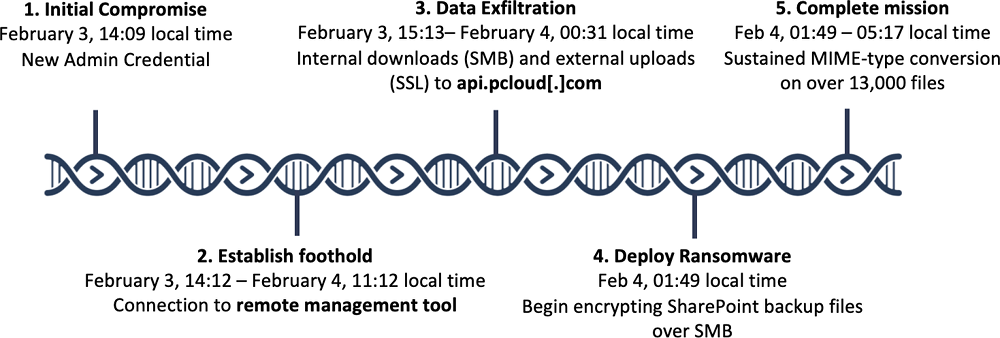Modern Threats to OT Environments
At the 2021 RSA cyber security conference, US Secretary of Homeland Security Alejandro Mayorkas made an era-defining statement regarding the cyber security landscape: “Let me be clear: ransomware now poses a national security threat.”
Last weekend, Mayorkas’ words rang true. A ransomware attack on the Colonial Pipeline – responsible for nearly half of the US East Coast’s diesel, gasoline, and jet fuel – resulted in the shutdown of a critical fuel network supplying a number of Eastern states.
The fallout from the attack demonstrated how widespread and damaging the consequences of ransomware can be. Against critical infrastructure and utilities, cyber-attacks have the potential to disrupt supplies, harm the environment, and even threaten human lives.
Though full details remain to be confirmed, the attack is reported to have been conducted by an affiliate of the cyber-criminal group called DarkSide, and likely leveraged common remote desktop tools. Remote access has been enabled as an exploitable vulnerability within critical infrastructure by the shift to remote work that many organizations made last year, including those with Industrial Control Systems (ICS) and Operational Technology (OT).
The rise of industrial ransomware
Ransomware against industrial environments is on the rise, with a reported 500% increase since 2018. Oftentimes, these threats leverage the convergence of IT and OT systems, first targeting IT before pivoting to OT. This was seen with the EKANS ransomware that included ICS processes in its ‘kill list’, as well as the Cring ransomware that compromised ICS after first exploiting a vulnerability in a virtual private network (VPN).
It remains to be seen whether the initial attack vector in the Colonial Pipeline compromise exploited a technical vulnerability, compromised credentials, or a targeted spear phishing campaign. It has been reported that the attack first impacted IT systems, and that Colonial then shut down OT operations as a safety precaution. Colonial confirms that the ransomware “temporarily halted all pipeline operations and affected some of our IT systems,” showing that, ultimately, both OT and IT were affected. This is a great example of how many OT systems depend on IT, such that an IT cyber-attack has the ability to take down OT and ICS processes.
In addition to locking down systems, the threat actors also stole 100GB of sensitive data from Colonial. This kind of double extortion attack — in which data is exfiltrated before files are encrypted — has unfortunately become the norm rather than the exception, with over 70% of ransomware attacks involving exfiltration. Some ransomware gangs have even announced that they are dropping encryption altogether in favor of data theft and extortion methods.
Earlier this year, Darktrace defended against a double extortion ransomware attack waged against a critical infrastructure organization, which also leveraged common remote access tools. This blog will outline the threat find in depth, showing how Darktrace’s self-learning AI responded autonomously to an attack strikingly similar to the Colonial Pipeline incident.
Darktrace threat find
Ransomware against electric utilities equipment supplier
In an attack against a North American equipment supplier for electrical utilities earlier this year, Darktrace/OT demonstrated its ability to protect critical infrastructure against double extortion ransomware that targeted organizations with ICS and OT.
The ransomware attack initially targeted IT systems, and, thanks to self-learning Cyber AI, was stopped before it could spill over into OT and disrupt operations.
The attacker first compromised an internal server in order to exfiltrate data and deploy ransomware over the course of 12 hours. The short amount of time between initial compromise and deployment is unusual, as ransomware threat actors often wait several days to spread stealthily as far across the cyber ecosystem as possible before striking.

How did the attack bypass the rest of the security stack?
The attacker leveraged ‘Living off the Land’ techniques to blend into the business’ normal ‘patterns of life’, using a compromised admin credential and a remote management tool approved by the organization, in its attempts to remain undetected.
Darktrace commonly sees the abuse of legitimate remote management software in attackers’ arsenal of techniques, tactics, and procedures (TTPs). Remote access is also becoming an increasingly common vector of attack in ICS attacks in particular. For example, in the cyber-incident at the Florida water treatment facility last February, attackers exploited a remote management tool in attempts to manipulate the treatment process.
The specific strain of ransomware deployed by this attacker also successfully evaded detection by anti-virus by using a unique file extension when encrypting files. These forms of ‘signatureless’ ransomware easily slip past legacy approaches to security that rely on rules, signatures, threat feeds, and lists of documented Common Vulnerabilities and Exposures (CVEs), as these are methods that can only detect previously documented threats.
The only way to detect never-before-seen threats like signatureless ransomware is for a technology to find anomalous behavior, rather than rely on lists of ‘known bads’. This can be achieved with self-learning technology, which spots even the most subtle deviations from the normal ‘patterns of life’ for all devices, users, and all the connections between them.
Darktrace insights
Initial compromise and establishing foothold
Despite the abuse of a legitimate tool and the absence of known signatures, Darktrace/OT was able to use a holistic understanding of normal activity to detect the malicious activity at multiple points in the attack lifecycle.
The first clear sign of an emerging threat that was alerted by Darktrace was the unusual use of a privileged credential. The device also served an unusual remote desktop protocol (RDP) connection from a Veeam server shortly before the incident, indicating that the attacker may have moved laterally from elsewhere in the network.
Three minutes later, the device initiated a remote management session which lasted 21 hours. This allowed the attacker to move throughout the broader cyber ecosystem while remaining undetected by traditional defences. Darktrace, however, was able to detect unusual remote management usage as another early warning indicative of an attack.
Double threat part one: Data exfiltration
One hour after the initial compromise, Darktrace detected unusual volumes of data being sent to a 100% rare cloud storage solution, pCloud. The outbound data was encrypted using SSL, but Darktrace created multiple alerts relating to large internal downloads and external uploads that were a significant deviation from the device’s normal ‘pattern of life’.
The device continued to exfiltrate data for nine hours. Analysis of the files downloaded by the device, which were transferred using the unencrypted SMB protocol, suggests that they were sensitive in nature. Fortunately, Darktrace was able to pinpoint the specific files that were exfiltrated so that the customer could immediately evaluate the potential implications of the compromise.
Double threat part two: File encryption
A short time later, at 01:49 local time, the compromised device began encrypting files in a SharePoint back-up share drive. Over the next three and a half hours, the device encrypted over 13,000 files on at least 20 SMB shares. In total, Darktrace produced 23 alerts for the device in question, which amounted to 48% of all the alerts produced in the corresponding 24-hour period.
Darktrace’s Cyber AI Analyst then automatically launched an investigation, identifying the internal data transfers and the file encryption over SMB. From this, it was able to present incident reports that connected the dots among these disparate anomalies, piecing them together into a coherent security narrative. This put the security team in a position to immediately take remediating action.
If the customer had been using Darktrace’s autonomous response technology, there is no doubt the activity would have been halted before significant volumes of data could have been exfiltrated or files encrypted. Fortunately, after seeing both the alerts and Cyber AI Analyst reports, the customer was able to use Darktrace’s ‘Ask the Expert’ (ATE) service for incident response to mitigate the impact of the attack and assist with disaster recovery.

Detecting the threat before it could disrupt critical infrastructure
The targeted supplier was overseeing OT and had close ties to critical infrastructure. By facilitating the early-stage response, Darktrace prevented the ransomware from spreading further onto the factory floor. Crucially, Darktrace also minimized operational disruption, helping to avoid the domino effect which the attack could have had, affecting not only the supplier itself, but also the electric utilities that this supplier supports.
As both the recent Colonial Pipeline incident and the above threat find reveal, ransomware is a pressing concern for organizations overseeing industrial operations across all forms of critical infrastructure, from pipelines to the power grid and its suppliers. With self-learning AI, these attack vectors can be dealt with before the damage is done through real-time threat detection, autonomous investigations, and — if activated — targeted machine-speed response.
Looking forward: Using Self-Learning AI to protect critical infrastructure across the board
In late April, the Biden administration announced an ambitious effort to “safeguard US critical infrastructure from persistent and sophisticated threats.” The Department of Energy’s (DOE) 100-day plan specifically seeks technologies “that will provide cyber visibility, detection, and response capabilities for industrial control systems of electric utilities.”
The Biden administration’s cyber sprint clearly calls for a technology that protects critical energy infrastructure, rather than merely best practice measures and regulations. As seen in the above threat find, Darktrace AI is a powerful technology that leverages unsupervised machine learning to autonomously safeguard critical infrastructure and its suppliers with machine speed and precision.
Darktrace enhances detection, mitigation, and forensic capabilities to detect sophisticated and novel attacks, along with insider threats and pre-existing infections, using Self-Learning Cyber AI, without rules, signatures, or lists of CVEs. Incident investigations provided in real time by Cyber AI Analyst jumpstart remediation with actionable insights, containing emerging attacks at their early stages, before they escalate into crisis.
Enable near real-time situational awareness and response capabilities
Darktrace immediately understands, identifies, and investigates all anomalous activity in ICS/OT networks, whether human or machine driven. Additionally, Darktrace actions targeted response where appropriate to neutralize threats, either actively or in human confirmation mode. Because Self-learning AI adapts alongside evolutions in the ecosystem, organizations benefit from real-time awareness with no tuning or human input necessary
Deploy technologies to increase visibility of threats in ICS and OT systems
Darktrace contextualizes security events, adapts to novel techniques, and translates findings into a security narrative that can be actioned by humans in minutes. Delivering a unified view across IT and OT systems.
Darktrace detects, investigates, and responds to threats at higher Purdue levels and in IT systems before they ‘spill over’ into OT. ‘Plug and play’ deployment seamlessly integrates with technological architecture, presenting 3D network topology with granular visibility into all users, devices, and subnets.
Darktrace's asset identification continuously catalogues all ICS/OT devices and identifies and investigates all threatening activity indicative of emerging attacks – be it ICS ransomware, APTs, zero-day exploits, insider threats, pre-existing infections, DDoS, crypto-mining, misconfigurations, or never-before-seen attacks.
Thanks to Darktrace analyst Oakley Cox for his insights on the above threat find.
Darktrace model detections:
- Initial compromise:
- User / New Admin Credential on Client
- Data exfiltration:
- Anomalous Connection / Uncommon 1 GiB Outbound
- Anomalous Connection / Low and Slow Exfiltration
- Device / Anomalous SMB Followed by Multiple Model Breaches
- Anomalous Connection / Download and Upload
- File encryption:
- Compromise / Ransomware / Suspicious SMB Activity
- Anomalous Connection / SMB Enumeration
- Device / Anomalous RDP Followed by Multiple Model Breaches
- Anomalous File / Internal / Additional Extension Appended to SMB File
- Anomalous Connection / Sustained MIME Type Conversion
- Anomalous Connection / Suspicious Read Write Ratio
- Device / Multiple Lateral Movement Model Breaches















.jpeg)




